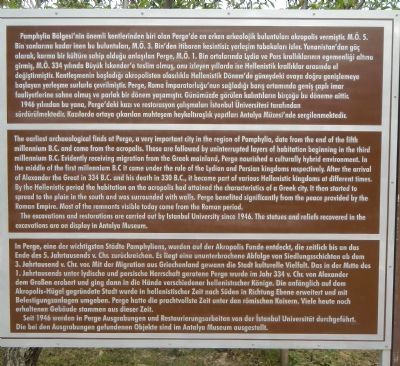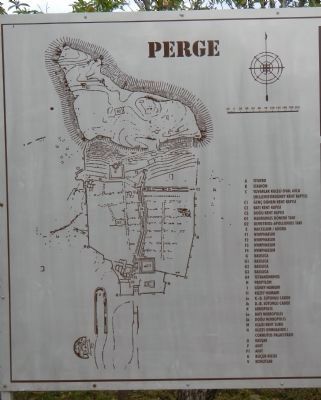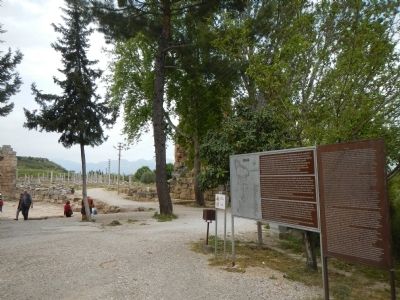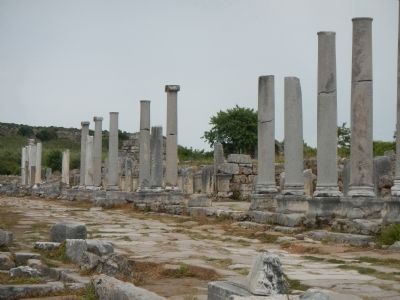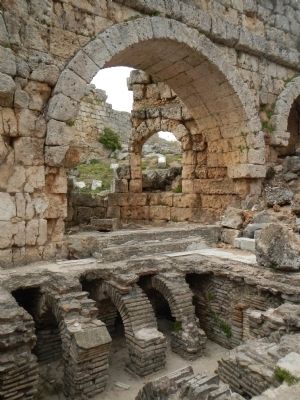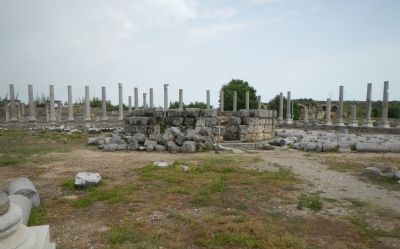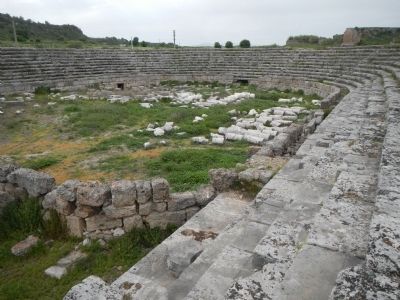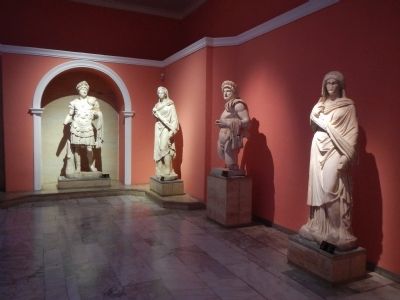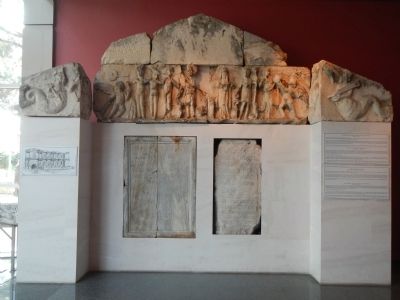Near Barbaros in Aksu, Antalya, Turkey — West Asia or Southeast Europe
Perge
Inscription.
English:
The earliest archaeological finds at Perge, a very important city in the region of Pamphylia, date from the end of the fifth millennium B.C. and come from the acropolis. These are followed by uninterrupted layers of habitation beginning in the third millennium B.C. Evidently receiving migration from the Greek mainland, Perge nourished a culturally hybrid environment. In the middle of the first millennium B.C it came under the rule of the lydian and Persian kingdoms respectively. After the arrival of Alexander the Great in 334 B.C. and his death in 330 B.C., it became part of various Hellenistic kingdoms at different times. By the Hellenistic period the habitation on the acropolis had attained the characteristics of a Greek city. It then started to spread to the plain in the south and was surrounded with walls. Perge benefited significantly from the peace provided by the Roman Empire. Most of the remnants visible today come from the Roman period.
The excavations and restorations are carried out by Istanbul University since 1946. The statues and reliefs recovered in the excavations are on display in Antalya Museum.
Turkish:
Pamphylia Bölgesi'nin önemli kentlerinden biri olan Perge'de en erken arkeolojik buluntuları akropolis vermiştir. M.Ö. 5. Bin sonlarına kadar inen bu buluntuları, M.Ö. 3. Bin'den itibaren kesintisiz yerleşim tabakaları izler. Yunanistan'dan göç alarak, karma bir kültüre sahip olduğu anlaşılan Perge, M.Ö. l. Bin ortalarında Lydia ve Pers krallıklarının egemenliği altına girmiş, M.Ö. 334 yılında Büyük İskender'e teslim olmuş, onu izleyen yıllarda ise Hellenistik krallıklar arasında el değiştirmiştir. Kentleşmenin başladığı akropolisten olasılıkla Hellenistik Dönem'de güneydeki ovaya doğru genişlemeye başlayan yerleşme surlarla çevrilmiştir. Perge, Roma İmparatorluğu'nun sağladığı barış ortamında geniş çaplı imar faaliyetlerine sahne olmuş ve parlak bir dönem yaşamıştır. Günümüzde görülen kalıntıların birçoğu bu döneme aittir.
1946 yılından bu yana, Perge'deki kazı ve restorasyon çalışmaları İstanbul Üniversitesi tarafından sürdürülmektedir. Kazılarda ortaya çıkarılan muhteşem heykeltıraşlık yapıtları Antalya Müzesi'nde sergilenmektedir.
Topics. This historical marker is listed in this topic list: Settlements & Settlers. A significant historical year for this entry is 1946.
Location. 36° 57.602′ N, 30° 51.237′ E. Marker is near Barbaros, Antalya, in Aksu. Marker is on Perge Yolu, on the left when traveling east. Touch for map. Marker is in this post office area: Barbaros, Antalya 07112, Turkey. Touch for directions.
Other nearby markers. At least 4 other markers are within walking distance of this marker. A different marker also named Perge (here, next to this marker); Roman Door (within shouting distance of this marker); Macellum / Agora (about 120 meters away, measured in a direct line); Southern Baths (about 150 meters away).
More about this marker. This marker is located at the entrance to the Perge site.
Also see . . . Perga -Wikipeida. Perga was an ancient and important city of Pamphylia, between the rivers Catarrhactes and Cestrus. It was renowned for the worship of Artemis, whose temple stood on a hill outside the town, and in whose honour annual festivals were celebrated. The coins of Perge represent both the goddess and her temple. Alexander the Great occupied Perge with a part of his army after quitting Phaselis, between which two towns the road is described as long and difficult. (Submitted on June 8, 2015, by Barry Swackhamer of Brentwood, California.)
Credits. This page was last revised on February 2, 2022. It was originally submitted on June 8, 2015, by Barry Swackhamer of Brentwood, California. This page has been viewed 431 times since then and 19 times this year. Photos: 1, 2, 3, 4, 5, 6, 7, 8, 9. submitted on June 8, 2015, by Barry Swackhamer of Brentwood, California. • Andrew Ruppenstein was the editor who published this page.
